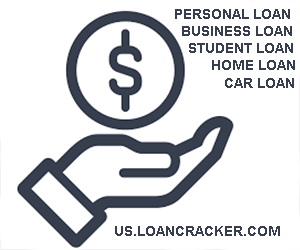Paying off student loans can be a daunting task, especially for recent graduates who are just starting their careers. Student loan forgiveness programs have become increasingly popular as a way to ease the burden of student debt. Student loan forgiveness programs offer relief by canceling some or all of a borrower’s federal student loan debt. In this article, we’ll dive into everything you need to know about student loan forgiveness.
What is Student Loan Forgiveness ?
Student loan forgiveness is a program that allows borrowers to have some or all of their federal student loan debt forgiven or canceled. This means that the borrower is no longer responsible for paying back that portion of their student loans. Student loan forgiveness programs are offered by the US government and can vary in terms of the amount of debt that is forgiven and the eligibility requirements.
Types of Student Loan Forgiveness Programs:
There are several types of student loan forgiveness programs, each with its own eligibility requirements and benefits. Here are the most common types of student loan forgiveness programs:
Public Service Loan Forgiveness (PSLF)
The Public Service Loan Forgiveness (PSLF) program is designed for borrowers who work in the public sector. This program offers forgiveness after the borrower has made 120 qualifying payments while working full-time for a qualifying employer. This program is available for borrowers with Direct Loans.
Teacher Loan Forgiveness:
The Teacher Loan Forgiveness program is designed for teachers who work in low-income schools or educational service agencies. This program offers forgiveness up to $17,500 for borrowers who have been teaching for at least five years. This program is available for borrowers with Direct Loans or Federal Family Education Loans (FFEL).
Perkins Loan Cancellation:
The Perkins Loan Cancellation program is available for borrowers with Federal Perkins Loans. This program offers forgiveness for borrowers who work in specific fields such as teaching, nursing, law enforcement, and the military.
Income-Driven Repayment Plan Forgiveness:
Income-Driven Repayment (IDR) plans are designed to help borrowers who are struggling to make their monthly payments. These plans set the borrower’s monthly payment amount based on their income and family size. After making payments for 20-25 years, depending on the plan, the remaining balance is forgiven.
Eligibility Requirements for Student Loan Forgiveness:
The eligibility requirements for student loan forgiveness vary depending on the type of forgiveness program. Here are some general requirements that may apply to most programs:
- Borrowers must have federal student loans.
- Borrowers must have made qualifying payments for a certain number of years.
- Borrowers must work in a qualifying job or field.
- Borrowers must be enrolled in a qualifying repayment plan.
How to Apply for Student Loan Forgiveness ?
To apply for student loan forgiveness, borrowers must submit an application to their loan servicer. The application process can vary depending on the type of forgiveness program. It is important to carefully review the application requirements and deadlines to ensure that the application is submitted correctly and on time.
FAQs:
Q: Will I have to pay taxes on forgiven student loans?
A: In most cases, yes. The IRS considers forgiven student loan debt as taxable income.
Q: Can private student loans be forgiven?
A: No, only federal student loans are eligible for forgiveness.
Q: How long does the student loan forgiveness process take?
A: The timeline for student loan forgiveness can vary depending on the type of forgiveness program and the borrower’s individual circumstances.
Conclusion:
Student loan forgiveness is a valuable tool for borrowers struggling with the burden of student loan debt. It can provide much-needed relief and help borrowers get back on track financially. However, it is important to carefully review the eligibility requirements and application process for each program before applying.
In addition to student loan forgiveness programs, there are other options for borrowers struggling with student loan debt. Income-driven repayment plans and loan consolidation can also help lower monthly payments and make student loans more manageable.
If you are struggling with student loan debt, don’t hesitate to reach out to your loan servicer for assistance. They can provide guidance on the best options for your individual situation.
In conclusion, student loan forgiveness can be a lifesaver for borrowers struggling with the burden of student loan debt. By understanding the different types of forgiveness programs, eligibility requirements, and application process, borrowers can take advantage of this valuable tool and get back on track financially.





